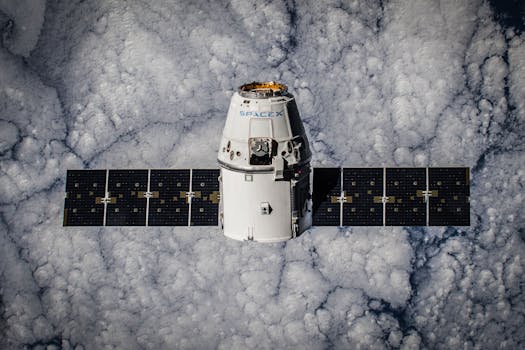Breaking Barriers: How Recent Developments are Transforming Satellite Communication

Breaking Barriers: How Recent Developments are Transforming Satellite Communication. The world of satellite communication is undergoing a significant transformation, driven by recent developments and innovations. These advancements are breaking barriers and opening up new opportunities for the industry, enabling faster, more reliable, and more accessible communication services.
Satellite communication has come a long way since its inception, with significant improvements in technology and infrastructure. The introduction of geostationary satellites in the 1960s revolutionized the industry, providing a stable and reliable means of communication. However, the high cost of launching and maintaining satellites, as well as the limited bandwidth and high latency, posed significant challenges. Recent developments, such as the introduction of low Earth orbit (LEO) satellites and high-throughput satellites (HTS), are addressing these challenges and transforming the industry.
The launch of LEO satellites has significantly reduced the cost of launching and maintaining satellites. LEO satellites are smaller, cheaper, and can be launched in larger quantities, making them more affordable and accessible. This has led to an increase in the number of satellite constellations, with companies such as SpaceX and OneWeb launching thousands of satellites into orbit. These constellations are providing global coverage, enabling communication services to reach remote and underserved areas.
HTS are another significant development in satellite communication. These satellites use advanced technologies such as beamforming and frequency reuse to provide high-speed and high-capacity communication services. HTS are being used to provide a range of services, including broadband internet access, mobile network backhaul, and telecommunications network services.
In addition to these developments, advancements in phased array antennas and digital signal processing are improving the efficiency and performance of satellite communication systems. These technologies are enabling the development of more sophisticated and capable satellites, which can provide higher-speed and higher-capacity communication services.
The impact of these developments is being felt across the industry, with satellite communication becoming more accessible and affordable. The cost of launching and maintaining satellites is decreasing, making it possible for more companies and organizations to access satellite communication services. This is leading to an increase in the adoption of satellite communication, with a range of industries and applications benefiting from the technology.
One of the key benefits of satellite communication is its ability to provide global coverage. Satellites can reach remote and underserved areas, where traditional communication infrastructure may not be available. This makes satellite communication an ideal solution for industries such as maritime communication, aeronautical communication, and disaster recovery.
In conclusion, recent developments in satellite communication are breaking barriers and transforming the industry. With improved technologies and innovations, satellite communication is becoming more accessible and efficient. The launch of LEO satellites, HTS, and advancements in phased array antennas and digital signal processing are driving this transformation. As the industry continues to evolve, we can expect to see even more innovative solutions and applications emerge, further expanding the reach and capabilities of satellite communication.
The future of satellite communication is exciting and promising, with many opportunities for growth and development. As the industry continues to break barriers and push the boundaries of what is possible, we can expect to see significant advancements in the years to come. Whether it’s providing global coverage, enabling high-speed communication services, or supporting critical industries and applications, satellite communication is poised to play an increasingly important role in the modern world.


